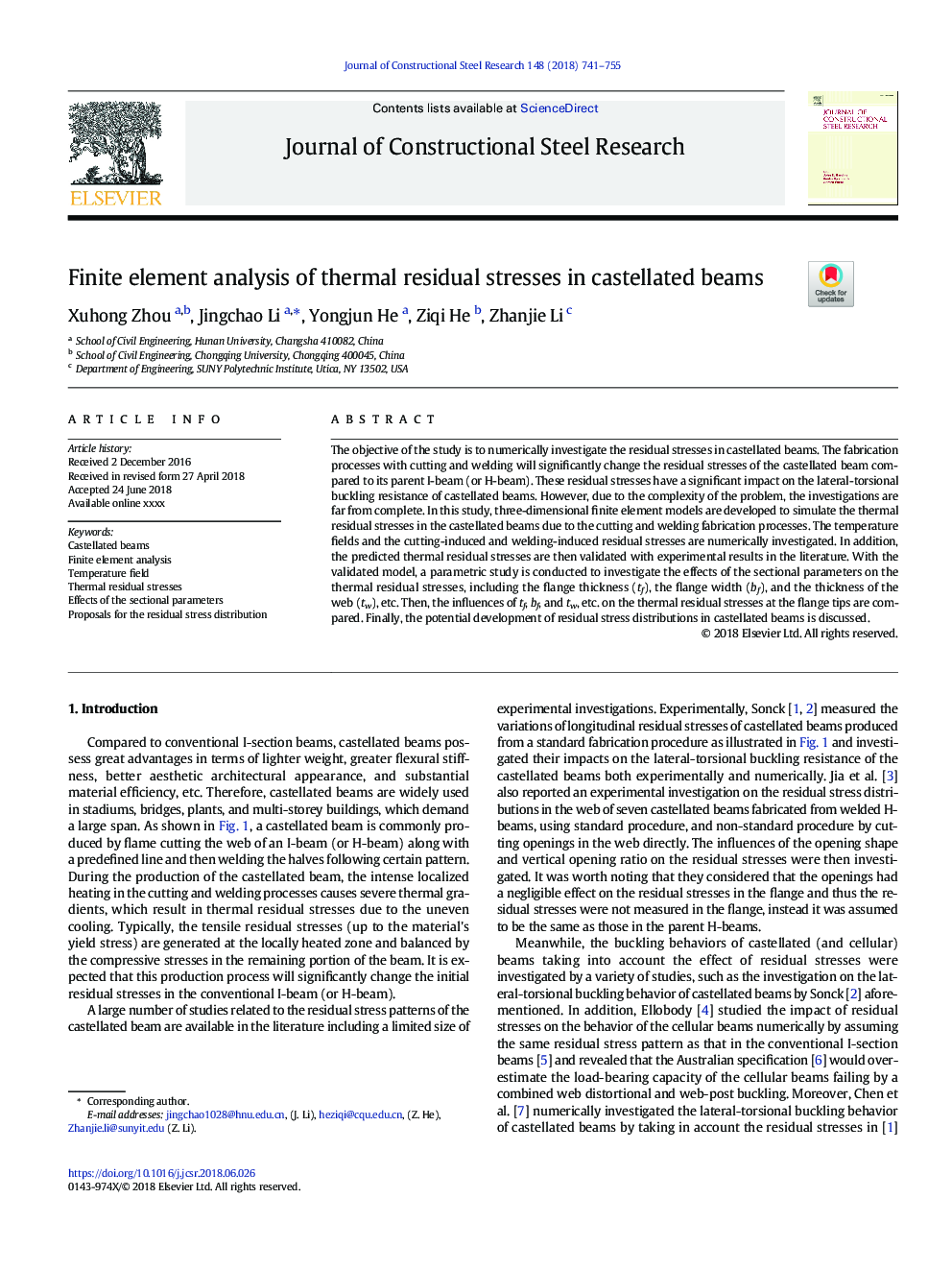| Article ID | Journal | Published Year | Pages | File Type |
|---|---|---|---|---|
| 6750652 | Journal of Constructional Steel Research | 2018 | 15 Pages |
Abstract
The objective of the study is to numerically investigate the residual stresses in castellated beams. The fabrication processes with cutting and welding will significantly change the residual stresses of the castellated beam compared to its parent I-beam (or H-beam). These residual stresses have a significant impact on the lateral-torsional buckling resistance of castellated beams. However, due to the complexity of the problem, the investigations are far from complete. In this study, three-dimensional finite element models are developed to simulate the thermal residual stresses in the castellated beams due to the cutting and welding fabrication processes. The temperature fields and the cutting-induced and welding-induced residual stresses are numerically investigated. In addition, the predicted thermal residual stresses are then validated with experimental results in the literature. With the validated model, a parametric study is conducted to investigate the effects of the sectional parameters on the thermal residual stresses, including the flange thickness (tf), the flange width (bf), and the thickness of the web (tw), etc. Then, the influences of tf, bf, and tw, etc. on the thermal residual stresses at the flange tips are compared. Finally, the potential development of residual stress distributions in castellated beams is discussed.
Related Topics
Physical Sciences and Engineering
Engineering
Civil and Structural Engineering
Authors
Xuhong Zhou, Jingchao Li, Yongjun He, Ziqi He, Zhanjie Li,
